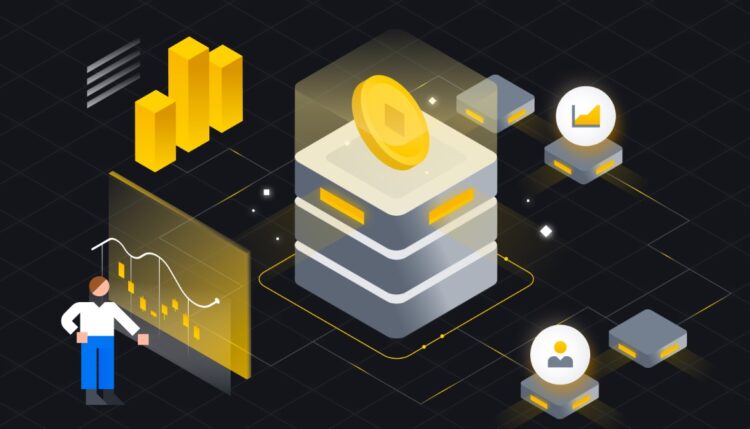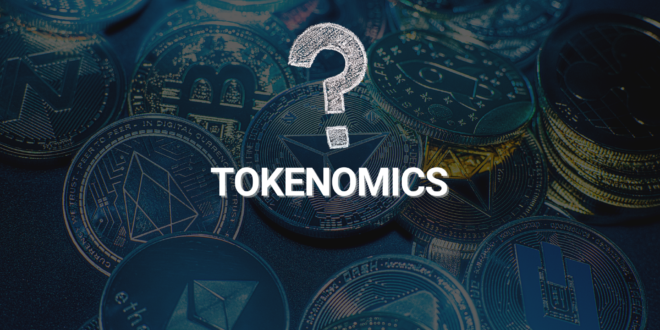Tokenomics is the process of creating a project, in which the creators think thoroughly about the prospect of a new project and the possibilities of its entry into the market.
Before explaining tokenomics in detail, let’s let’s look tokenomics at the define of a token.
What is a token?
A token is a digital asset that is developed from an existing blockchain. For example, Ethereum, Solana, BNB, etc. It differs from coins by its more advanced functionality. While a coin is used only as a means of payment, a token provides various benefits to holders and acts similarly to traditional stocks.
Many cryptoinvestors are now interested in buying promising tokens, as their returns after the public sale can reach incredible numbers. For example, the Solana token is up by +10000% in 2024.
But the success of token development and its profitability depends largely on well-designed token economics.
What is tokenomics?

Tokenomics is a strategically significant component of a project. Its task is to control the cryptocurrency economy and determine the total amount of assets in circulation. That is, the number of tokens that users will be able to mine, and the role that token plays in the ecosystem.
In addition to the above, tokenomics determines the distribution of assets. When a token goes online, the project team receives a certain portion of all the assets issued. And how many assets the team gets depends on how central the project is. The whole point is that if the team gets most of all the tokens, then the network becomes dependent on the team. That is, if the entire team decides to sell all their tokens when their price goes up, the exchange rate will fall, and the other holders will suffer losses.
Tokenomics also prescribes a technique for burning tokens. Tokens are burned in order to reduce asset issuance and thereby increase the value and value of the cryptocurrency. Tokens are burned irrevocably, and the project warns investors about this immediately.
The importance of understanding tokenomics and getting it right
Focusing on long-term development, a staffed team of specialists, clear and realistic plans, elaborated goals and deadlines: all this indicates the reliability and sustainable growth of the asset in the future.
At IT outsourcing company RVA Solutions, when working with blockchain projects, we always pay a lot of attention to developing the right tokenomics. This helps our clients’ projects to take a leading position in the market and actively develop the project. In addition to blockchain project launches, we also develop mobile and web applications, provide IT outstaffing models, develop crowdfunding platforms, payment systems, and crypto launchpads.
The foundation of tokenomics

Foundation is the essential component of tokenomics, and it is responsible for setting the overall strategy and objectives of a token. The foundation should also have a clear understanding of the industry it’s entering in order to create a successful token. Without a solid foundation, a token may be unsuccessful due to a lack of marketability or utility.
Some factors to consider when designing a foundation include:
- The purpose of the platform – What will the tokens be used for? Is there a need for them?
- Security and compliance – How will the tokens be secured, regulated, and taxed? Are any risks associated with issuing them appropriately?
- Team and governance – Who is behind the project? Who are its key players? How will they be accountable for achieving project goals?
- Community and engagement – Do the project have an active community that supports it? Is there potential for growth in this area?
What are the benefits?
Tokens can provide a reward system for contributors to a project or system, or be used as an investment vehicle. The advantages of tokenomics include:
- Distributed ownership and control: Tokens are owned by many people, not just those who hold the initial coins or tokens. This ensures that token holders have voting power and share in the rewards generated by the project.
- Liquidity and security: Tokens can be traded on exchanges, which gives them liquidity and security. This means they can be used to buy goods and services or transferred to other people.
- Developer incentive systems: Developers are often rewarded with tokens for working on projects. This encourages them to continue developing the project and makes it more likely that they will build features that are valuable to others.
- User engagement: By providing users with incentives to use a service or participate in a process, tokens can encourage wider participation in an ecosystem. In turn, this creates a stronger community and leads to greater user loyalty.
How to know if it works?

There are a number of different metrics that can be used to measure tokenomics, but some of the most important include:
- Payout ratio: This measures how much money is distributed out of the total token supply each year. A high payout ratio indicates that the tokens are being used effectively for transactions and rewards.
- Velocity: This measures how often a token is used in comparison to the total supply. A high velocity indicates that demand for the token is high and that it may have potential as an investment or trading commodity.
- Circulating Supply: This measures how many tokens are currently available for use by users. A low circulating supply indicates that there is strong demand for the token, while a high circulating supply may indicate that the token is not being actively used and may be worth less overall.
- Total Supply: This measures the total amount of tokens in existence, including all future tokens that will be created over time. A low total supply indicates that there is strong demand for the token, while a high total supply may indicate that there is little or no potential for growth in value for holders of the token.
Conclusion
Tokenomics is the study of how tokens are used as a means of exchange, and it can provide valuable insights into the ICO process. By understanding tokenomics, you can better assess an ICO’s potential economic viability and decide whether or not to invest. In this article, we have provided a comprehensive overview of tokenomics, including an explanation of what a token is and why it matters. We hope that this information will help you make well-informed decisions when investing in upcoming ICOs.
 Hi Boox Popular Magazine 2024
Hi Boox Popular Magazine 2024



